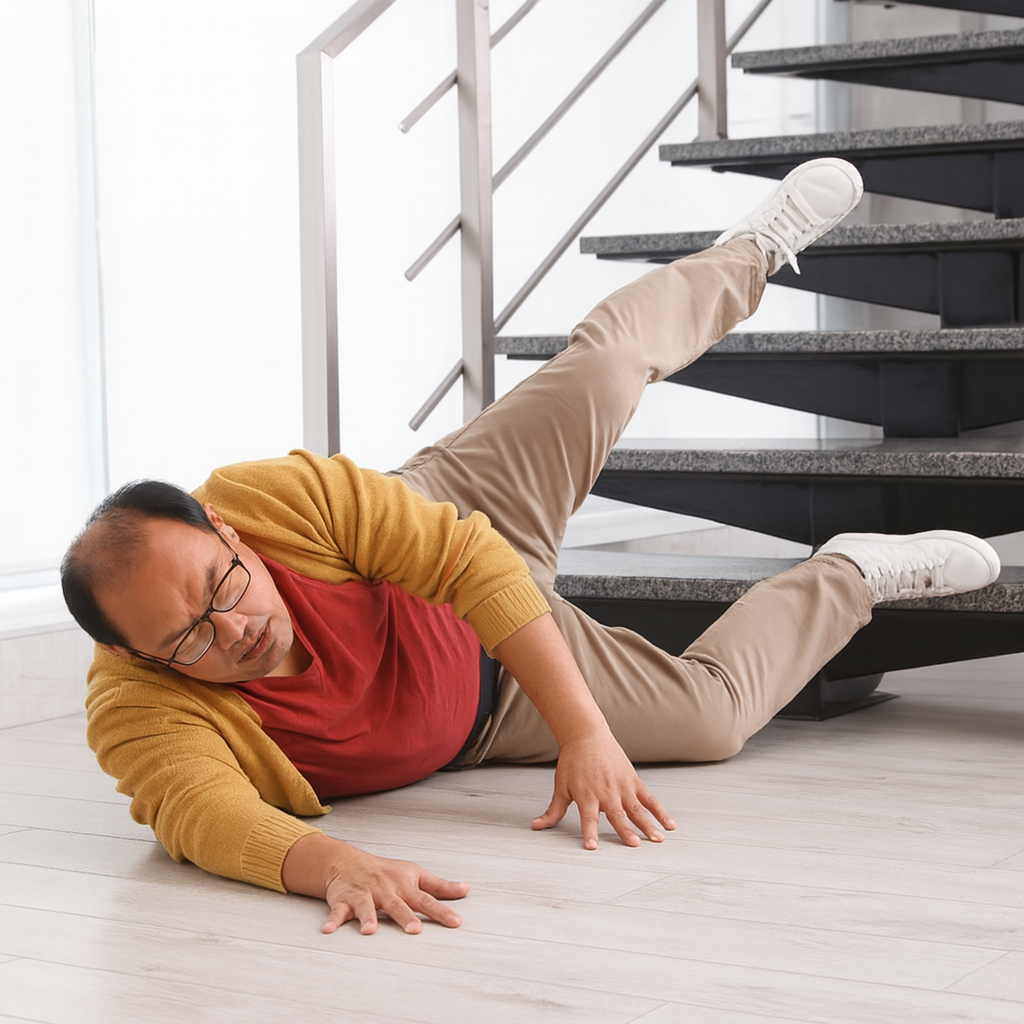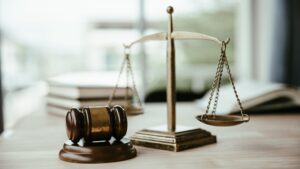
Glendale’s shopping centers, apartment complexes, and offices stay active year-round, with constant foot traffic moving through polished floors, entryways, and stairwells. But with that activity comes a quiet risk: falls remain one of California’s most persistent causes of serious injury and death.
According to the U.S. Bureau of Labor Statistics, 79 fatal workplace incidents in California in 2023 were caused by slips, trips, and falls, representing nearly one in five occupational fatalities statewide.
While many of these occurred on job sites, similar hazards exist in everyday public and private spaces. Wet floors, broken tiles, and uneven curbs send thousands of Californians to emergency rooms each year. A single misstep can result in a broken hip, spinal injury, or traumatic brain damage, injuries that often have lasting effects.
So, when is the property owner legally responsible when this happens? California law defines clear duties for maintaining safe premises, but proving negligence depends on evidence, timing, and documentation.
In this guide, we’ll explain how liability works in Glendale slip and fall cases, what conditions make a property owner at fault, and how an attorney can help you recover compensation after a preventable fall.
Slip and fall accidents are part of premises liability law in California, which holds property owners accountable for keeping their premises reasonably safe for lawful visitors.
This duty applies to both commercial and residential owners alike. For example:
These responsibilities exist for anyone who opens their property to customers, tenants, or guests.
Liability arises when three conditions align:
Glendale cases follow California Civil Code §1714, which establishes a general duty of care.
In simple terms, it requires property owners to act as reasonably cautious people would under similar circumstances. Owners must take reasonable steps to address hazards that could cause foreseeable harm.
Winning a slip and fall case requires proving four specific legal elements. Each one builds on the last, creating a complete picture of negligence and harm.
Property owners in Glendale carry a legal responsibility to maintain safe premises for everyone with lawful access. This duty varies based on the visitor’s status:
Businesses must inspect floors, aisles, and entrances regularly. They can’t wait for accidents to happen before addressing obvious maintenance needs. Landlords must repair leaks, uneven pavement, or lighting issues in common areas like lobbies, stairwells, and parking structures.
A breach occurs when an owner fails to meet their duty of care. This happens through action or inaction. Examples include:
Consider a Glendale retail store with an uneven floor tile that wobbles when stepped on. If employees know about it, customers have complained about it, and management does nothing for weeks, that represents a clear breach of duty.
The “should have known” standard matters here. Even if no one reported the hazard directly, property owners must conduct reasonable inspections. A leaking pipe that’s been dripping for days creates an obvious puddle that any inspection would reveal.
The dangerous condition must directly cause both the fall and your injuries. This element connects the hazard to your harm through a clear chain of events.
Tripping over an unmarked floor repair in a Glendale shopping center demonstrates direct causation. The hazard (exposed repair work) caused the fall, which caused the injury. Your medical records should document injuries consistent with the type of fall you experienced.
Defense attorneys often challenge causation by suggesting alternative explanations. They might argue you were distracted, moving too fast, or would have fallen anyway due to a pre-existing balance issue. Strong evidence counters these arguments.
You must prove measurable harm resulted from the fall. California law requires actual losses before you can recover compensation. These damages include:
Documentation proves damages. Medical records show the extent of injuries and treatment needed. Pay stubs and employer statements verify lost income. Personal testimony and expert opinions establish pain, suffering, and life changes.
Certain property conditions consistently cause falls and injuries across Glendale. Recognizing these hazards helps both property owners prevent accidents and victims identify liability:
Glendale’s combination of older buildings and heavy pedestrian traffic makes property maintenance especially important. High-traffic areas wear down faster, and aging infrastructure requires more frequent inspection and repair.
Not every fall on someone else’s property creates liability. Several circumstances limit or eliminate the property owner’s responsibility.
California law recognizes that people must watch where they’re walking. If a danger was clearly visible to a reasonable person paying normal attention, the property owner may not be liable. A large pothole in bright daylight, a clearly marked wet floor, or a visible step-down might qualify as open and obvious.
This defense has limits. Even obvious hazards can create liability if the owner knew people might be distracted or if the situation made the hazard unavoidable.
Property owners owe limited duties to trespassers. If you weren’t legally allowed on the property, you’ll face significant challenges recovering compensation. The exception involves child trespassers; owners must take reasonable care to prevent attracting children to dangerous conditions.
California follows pure comparative negligence. If you share partial responsibility for your fall, your compensation decreases proportionally. Were you texting while walking? Ignoring posted warning signs? Wearing inappropriate shoes for the conditions? The jury can assign you a percentage of fault.
If you’re found 25% responsible for your fall, you recover only 75% of your damages. At 50% fault, you get half. Even at 99% fault, you can still recover 1%, though few cases proceed at that level.
Property owners need a reasonable time to discover and address hazards. If a customer knocks over a display, creating a hazard, and another customer falls seconds later, the store may not have had sufficient opportunity to respond. The “reasonable time” standard depends on the circumstances, but owners can’t fix problems they haven’t had time to discover.
Slip and fall injuries disrupt your life. Between medical appointments, lost work time, and physical pain, the last thing you need is fighting with insurance companies over compensation you deserve.
Thompson Law’s Glendale slip and fall lawyers offer FREE CASE REVIEWS to injured victims. Call today to discuss your accident with an experienced attorney who can evaluate your claim and explain the process ahead.
During this consultation, you’ll learn whether you have a viable case, what compensation you might recover, and how long the process typically takes. There’s no pressure to hire the firm immediately, just honest answers about your legal options.
Contact Thompson Law now for your FREE CASE REVIEW. Their team will handle evidence collection, documentation, and insurance communication while you focus on recovery.
Don’t let property owners avoid responsibility for dangerous conditions. Get the legal help you need to protect your rights and recover fair compensation.






Thompson Law charges NO FEE unless we obtain a settlement for your case. We’ve put over $1.9 billion in cash settlements in our clients’ pockets. Contact us today for a free, no-obligation consultation to discuss your accident, get your questions answered, and understand your legal options.
State law limits the time you have to file a claim after an injury accident, so call today.